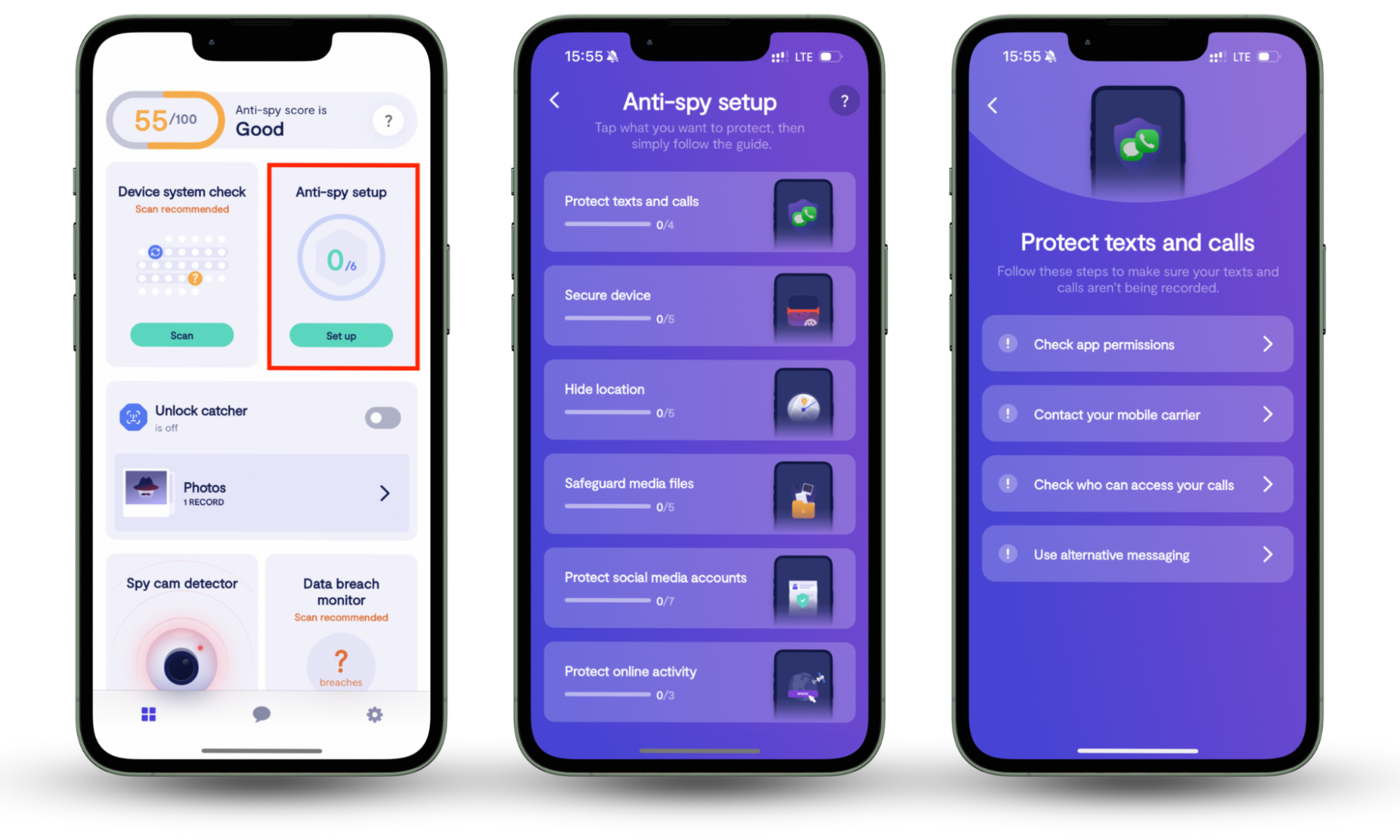Table of contents
- What does catfish mean?
- Signs of catfishing
- A new or recently created profile on social media
- They don't have many followers or friends
- Little or no online presence
- Using only professional pictures
- Using stolen or fake pictures
- The person seems too good to be true
- Your relationship moves along quicker than normal
- Avoiding video calls
- Love bombing
- The person asks for money or financial help
- Avoiding physical meetups
- Asking you for deeply personal information
- Poor English or bad grammar
- Something feels off
- What to do if you are getting catfished?
- Examples of catfishing
- Advice to avoid catfishing
- Conclusion
What does catfish mean?
To catfish means creating a false identity or persona to deceive someone online. A catfish ploy can involve fake names, pictures, and personal information. The term is commonly associated with online dating platforms and social media, where individuals may create fake profiles to lure a romantic partner or manipulate others for various reasons.
Common reasons for catfishing are:
- Emotional manipulation: Some people are drawn to manipulating others. This could entail lying to others or enjoying the power of playing with someone’s emotions and controlling their lives.
- Escapism or fantasy: For some, catfishing is an opportunity to be someone else. This could stem from dissatisfaction in their own lives or fulfilling a fantasy or curiosity.
- Attention/validation seeking: Some individuals use catfishing as a means to receive positive attention, admiration, and validation from others.
- Revenge: Catfishing can be a vehicle to get revenge on someone by manipulating, embarrassing, or emotionally harming them.
- Financial scams: Some catfishing ploys use stories and manipulation to exploit a victim’s sympathies and generosity for financial gain.
So, catfishing goes beyond the emotional damage. It opens doors for cybercriminals to commit financial scams, leaving victims with monetary losses and compromised security. Keeping your personal info safe is crucial, and that's where Clario Anti Spy can help you. We’ve created an Ani-spy setup feature to provide comprehensive protection for Android and iPhone users. This tool can safeguard your texts, calls, media files, social media accounts, and even hide your location. It's a user-friendly guide that boosts your device's safety and reduces the risk of spying threats occurring.
Here’s how to start using Clario’s Anti-spy setup:
- Download Clario Anti Spy.
- Set up an account.
- Under the Anti-spy setup feature, click Set up.
- Choose what you want to protect and follow the instructions.

Signs of catfishing
Like other social engineering ploys, catfishing can be very deceptive. A savvy catfisher will conduct research about their victims and go to elaborate lengths to create realistic personas. Though they can be convincing, you can spot a catfisher—if you know what to look for.
Here are some common signs of catfishing to look out for:
- A new or recently created profile on social media
- They don't have many followers or friends
- Little or no online presence
- Using stolen or fake pictures
- The person seems too good to be true
- Your relationship moves along quicker than normal
- Avoiding video calls
- Love bombing
- The person asks for money or financial help
- Avoiding physical meetups
- Asking you for deeply personal information
- Poor English or bad grammar
- Something feels off
Now, let’s delve deeper into these signs of catfishing:
A new or recently created profile on social media
A relatively new social media profile may have been created for the sole purpose of catfishing. Especially, if their other accounts are also new or non-existent. Considering most people have had social media accounts for years, a new profile is a definite cause for suspicion.
They don't have many followers or friends
A profile with a limited number of followers or friends could be an indicator that it’s being used for catfishing on social media. After all, social media is generally used to connect and engage with others. If someone uses social media to exclusively communicate with you—and no one else—it’s a definite red flag.
Little or no online presence
Today, it’s common for people to have multiple social media accounts—a limited online presence could suggest you’re dealing with a catfisher. Of course, some people genuinely choose to have a limited presence, so you’ll have to use your intuition and judge in relation to the other signs listed.
Using only professional pictures
A profile that consists solely of professional pictures and no personal ones suggests that it’s fake. A catfishing scam requires the assailant to mask their true identity and create an enticing persona to lure their victims.
Using stolen or fake pictures
Some people catfish to escape themselves and become someone else. Stolen or fake pictures help them achieve that. A profile picture is the “face” of a social media account. Catfishers will use online stock photos, pictures of models, or stolen photos from other accounts in order to create their catfishing persona.
The person seems too good to be true
Catfishing, by definition, is the ability to assume online identities and create stories to attract others. Like sugar daddy scammers, catfishers want to create positive feelings in their victims to perpetuate their deceit. If someone online seems too good to be true, you should question their motivations.
Your relationship moves along quicker than normal
Catfishing plays with your heart—so that you don’t use your head. In any context, a relationship that rapidly escalated to the heights of passion should be met with caution. But that’s doubly true when dealing with an online love interest that you’ve never met in person.
Avoiding video calls
Catfishing online relies on a carefully-crafted fake persona—and the whole charade can end with a video call. That’s why a catfisher will do everything they can to avoid a video call with you. Besides a flat-out refusal, they could make excuses, like claiming they are busy or that their device’s camera is broken.
Love bombing
Some catfishers will attempt to sweep you off your feet with grand romantic gestures or words. Though it may be tempting to give in, remember that they prey on your emotions. Tugging at your heartstrings is one of the most effective means to manipulate you.
The person asks for money or financial help
Some catfishing scams involve elaborate stories and scenarios that all end in the same way: asking you for money. These plots also play on your emotions. They might revolve around stories of sick family members with hospital bills, asking for money to buy a plane ticket to finally meet or even a smishing ploy. Never give anyone you don’t know or trust money online.
Avoiding physical meetups
A catfisher will appear extremely attentive to you online, but they will avoid a physical meetup. Catfishing on the internet is based on a fantasy that’s perpetuated via messages and fake photos/profiles. Meeting in person will shatter the illusion. A catfisher will come up with lies and excuses to avoid a face-to-face at all costs.
Asking you for deeply personal information
Some catfishing schemes are out to get personal information for other scams or to further manipulate you emotionally. Either way, revealing private information to a stranger online is never wise. Your digital identity can be used for cyberstalking and unlocking online accounts or devices. Keep personal information to yourself.
Poor English or bad grammar
Though not everyone is a grammar whiz, you should be suspicious of strange language— especially if someone claims to be a native speaker. Sometimes a catfisher will be based abroad and attempt to scam a victim in a country or language other than their own.
Something feels off
Sometimes your instincts are the best defense mechanism. If someone you’re talking to online seems to be checking all the right boxes, yet something still feels “off,” you’re probably right. Some catfishers are extremely good at deceiving others and they may not exhibit any signs of catfishing. In these cases, go with your gut reaction if something doesn’t sit well with you.
What to do if you are getting catfished?
If you’re getting catfished, it’s crucial to act quickly to prevent or stop any damage. This involves: ending communication, protecting your personal information, and reporting the event to the proper authorities and your contacts—who may also be at risk. In some cases, psychological help may be advised.
Here’s what to do if you are getting catfished:
- Stop all communication: Any further communication could lead to more harm—including psychological. It’s best not to try to resolve the situation; just make a clean break.
- Protect your personal information: Change your passwords, use two-factor authentication, and check your online bank accounts and email addresses. Refer back to your correspondence with the catfisher for any and all personal information you might have revealed.
- Report the catfishing: Depending on the severity of your case, reporting the catfishing—either to the online platform or local authorities—could help stop the catfisher from harming others.
- Inform friends and family: A catfisher may strike others on your contact list or family members and friends that you had mentioned to them. Catfishers feed on the information of their victims, and if you’ve revealed any private details about others, they may also be at risk.
Examples of catfishing
Catfishing is widespread—to the extent that it inspired a long-running MTV reality show focused on depicting such incidents. Beyond the TV screen, plenty of real-life instances of catfishing have captivated the public’s fascination. Here are some notorious examples:
- Manti Te’o: The former NFL football player became embroiled in a high-profile catfishing incident that involved his online girlfriend, Lennay Kekua, tragically dying of leukemia. He publicly mourned the loss, only to learn from reporters that Kekua never existed and that he was catfished by an individual named Ronaiah Tuiasosopo.
- Casey Donovan: Australian singer and winner of Australian Idol was caught in a catfishing ploy where she believed she was in a six-year online relationship with a man named Campbell. She eventually discovered that Campell was actually a woman named Olga.
- Thomas Montgomery and Mary Shieler: Montgomery, a 47-year-old married man pretending to be an 18-year-old, ended up in a love triangle with Mary, a middle-aged woman pretending to be an 18-year-old, and Montogemery’s 22-year-old coworker, Brian. Out of jealousy, Montgomery killed Brian, revealing the whole web of deception.
- Lydia Adelmalik: The identities of actors Lincoln Lewis and Danny Mac were used by catfisher Adelmalik for four years, resulting in the suicide of one victim. The victim, who had attended school with Lewis, was familiar with aspects of his life, which Adelmalik later exploited. Abdelmalek was found guilty of stalking 6 people.
Advice to avoid catfishing
With proper precautions, you can avoid catfishing altogether. Here’s how:
- Be cautious: Trust your instincts. If someone seems too good to be true, they probably are.
- Keep personal information private: Including your address, financial details, or intimate photos/videos.
- Verify: Research the person’s profiles and online presence.
- Learn catfishing tactics: Understand the signs of catfishing to avoid threats.
Conclusion
It can be difficult to find out if someone is catfishing you—and by the time you discover them, the damage may already be done. That’s why it’s better to avoid it altogether by learning the telltale signs of catfishing and using a dedicated cybersecurity tool that protects your device and sensitive data.
Clario Anti Spy’s Anti-spy setup rises to the challenge. Our tool shields your texts, calls, media files, social media accounts, and even your location, ensuring your sensitive information stays protected.
Secure your device, your data, and your peace of mind.


